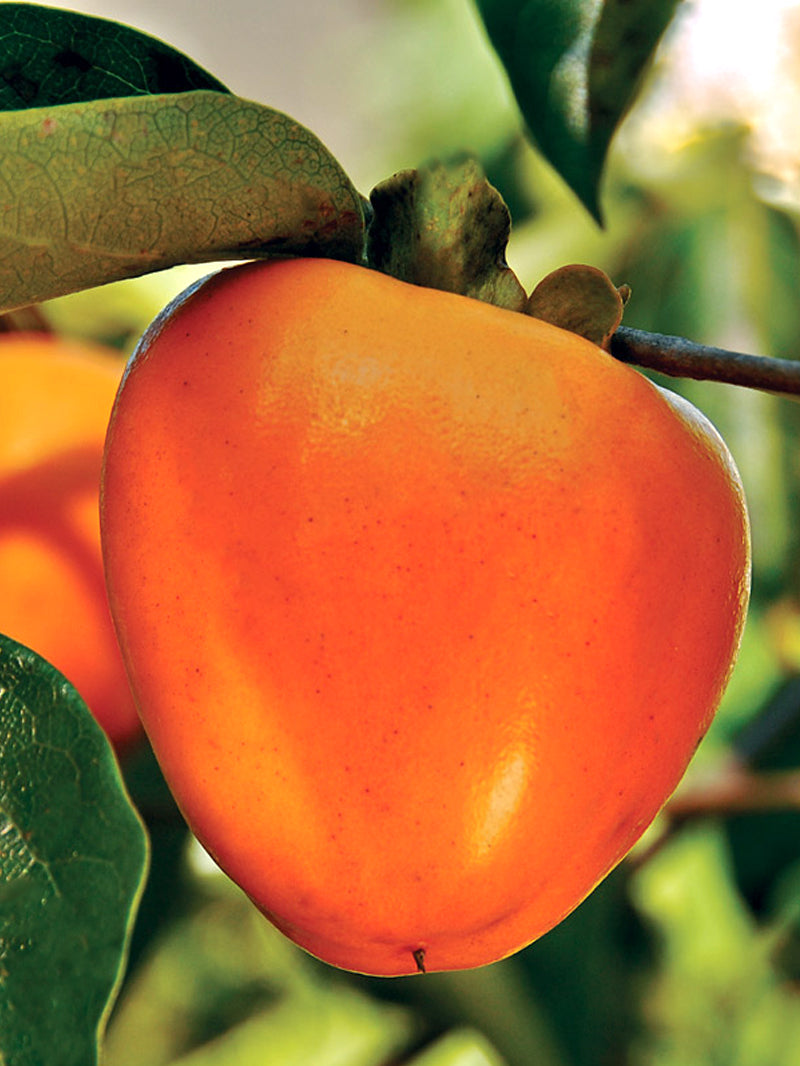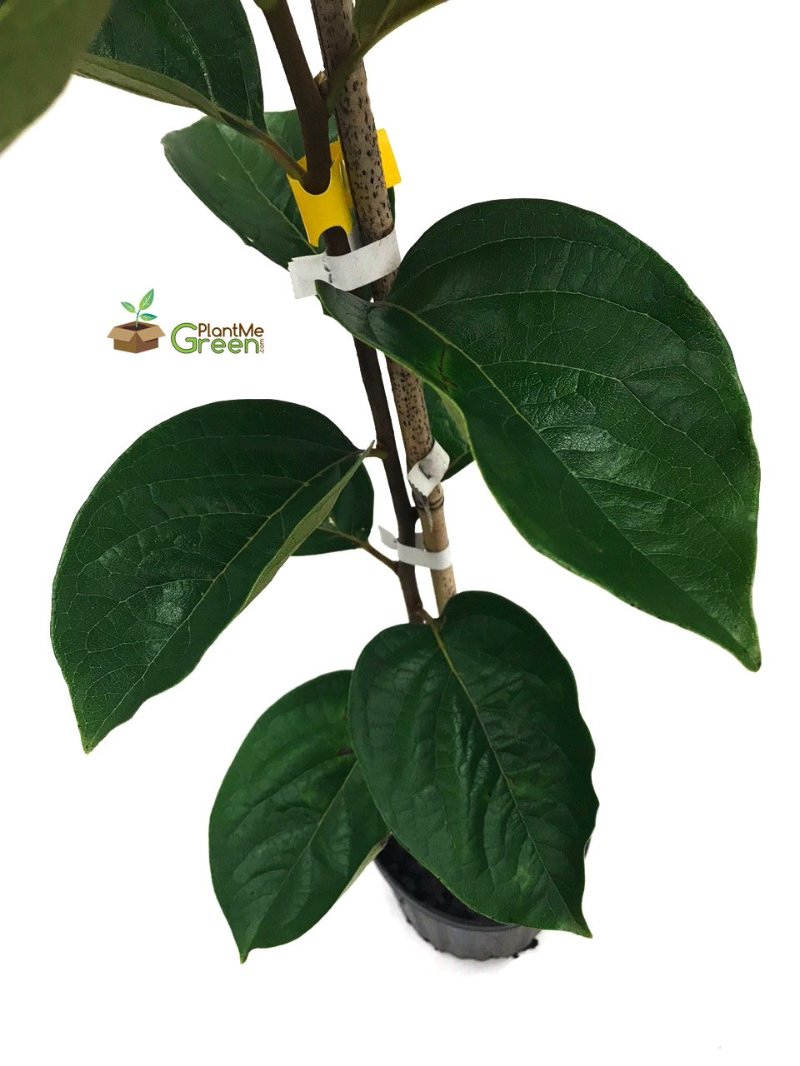Plant Quick Guide
Growing Zones:
Mature Height:
Mature Width:
Sunlight:
Spacing:
Chill Hours:
Growth Rate:
Harvest Time:
Years to Bear:
Pollinator:
Does Not Ship To:
Persimmon Trees - Giombo (Astringent)
USDA Hardiness Zones: 7-9.
Description
Giombo is one of the most highly regarded astringent persimmons. Both fruit appearance and fruit quality are rated very high. The fruit of Giombo is large - up to 5 inches- and has the shape of the Hachiya, but smooth texture and is very sweet much like the Saijo persimmon. Fruit are light translucent orange and thin pealed with a sweet, juicy, jelly type flesh. Giombo fruit are a connoisseur’s choice! Fruit ripens mid October through mid November. The tree is early to start growth in the spring and is sometimes injured by freezing temperatures. This medium size tree grows to a maturity size of 15+ feet. It is self fertile and its leaves will turn red in the fall. It is an excellent choice for the deep South and South Texas. We graft the Giombo persimmon onto native American persimmon root stock.
USDA ZONES: Zone 7, Zone 8, & Zone 9
More Information: Persimmon Growing Guide
Shipping

At Plant Me Green we handle, package and ship the products you order with the utmost care. We ship your plants using FedEx Ground® the following business day after you have completed checkout.
We are now offering $15 flat rate shipping for all tree orders! Replacement tree shipping cost will be $15 per box. We still cannot ship to some states and US territories based off the Agricultural Laws that may be in place. Please see below for all exclusions.
If you have any questions concerning transit time for your order, please feel free to contact us at info@plantmegreen.com or toll free 855-817-5268.
Trees: Due to strict Agricultural Laws in place, we currently cannot ship to the following states: Alaska, Arizona, California, Hawaii. We cannot ship to Puerto Rico or international.
How to Plant

STEP 2) Once you've located the perfect spot, the hole you are digging must be at least double the width and as deep as the root system you are planting.
STEP 3) Remove the plant from the pot and place the root ball in the hole. The top of the root system should be level with the ground. Before placing the tree or shrub in the hole, use your hands to gently break up the root system.
STEP 4) Once the plant is in place, backfill the hole with native soil and any leftover potting material.
STEP 5) Pack down the soil to eliminate any air pockets.
STEP 6) When finished, water thoroughly.
Care Guide










